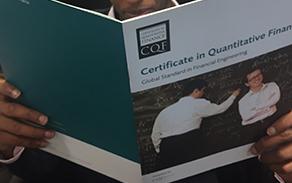What is the Binomial Model?

The binomial model is a mathematical model used to value financial derivatives, particularly options, by modeling the movement of the underlying asset price over discrete time periods. It is a simple, yet powerful tool commonly employed in option pricing and risk analysis.
Key features include:
Discrete Time: The binomial model divides time into a series of discrete intervals or periods. Typically, these intervals are equal in length, such as days, months, or years. The number of periods chosen depends on the desired level of accuracy and the characteristics of the underlying asset.
Two Possible Price Movements: The model assumes that the price of the underlying asset can move in only two directions at each time step: up or down. The magnitudes of these price movements are determined by the model parameters, such as an up factor and a down factor.
Probabilistic Movement: At each time step, the model assigns probabilities to the up and down movements based on assumptions or historical data. These probabilities, often denoted as p and 1-p, represent the likelihood of each price movement occurring.
Asset Price Calculation: Starting from the initial asset price, the binomial model calculates the potential asset prices at each subsequent time step based on the up and down movements. These calculations are typically performed using multiplication or division by the up and down factors.
Option Valuation: The binomial model values options by calculating the expected present value of future cash flows associated with the option. At each time step, the model determines the option value based on the underlying asset prices and the option's payoff function. The option value is then discounted back to the present using a risk-free interest rate.
Recursive Backward Calculation: The binomial model utilizes a backward calculation process, starting from the final time step and moving back to the initial time step. This process involves determining the option values at each step based on the expected values and probabilities of the subsequent steps.
The binomial model is flexible and can handle a variety of option types, including European options, American options, and options with different exercise styles or features. It can accommodate various assumptions and market conditions, such as constant or time-varying volatility. While the binomial model is computationally intensive compared to other option pricing models like the Black-Scholes model, it is widely used due to its intuitive structure and ability to capture discrete price movements accurately.
It's important to note that the binomial model is a simplification of the actual market dynamics and assumes certain assumptions about the underlying asset's behavior. Nonetheless, it serves as a valuable tool for option pricing and understanding the basic concepts of derivative valuation.
The binomial model is covered in more detail in module 1 of the CQF program.




